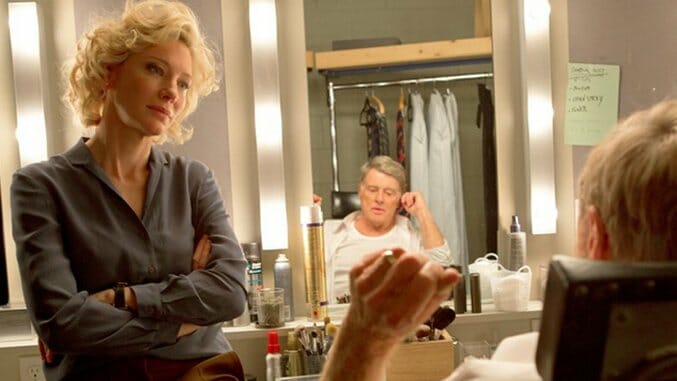Truth

It’s probably much too glib to call James Vanderbilt’s Truth a smart movie for dumb people—but then Truth is one awfully glib piece of work. A well-researched but redundant fictionalization of the debacle that cost broadcasting legend Dan Rather and veteran news producer Mary Mapes their jobs, Truth is a truly weird movie, a celebration of investigative journalism that itself has absolutely nothing new to reveal. Its core point—that television news has shifted from being a public service to a profit center and therefore allowed journalism to be corrupted by financial and political interests—is a valid and worthy one, but it’s also one that virtually any thinking adult who hasn’t had his or her head up his or her ass for the past 25 years already knows.
Truth attempts to dramatize the point by following Rather and Mapes (played by Robert Redford and Cate Blanchett, respectively) as they run down the story of President George W. Bush’s National Guard service—or lack thereof—during the Vietnam War. When they’re misled by a source and the story gets picked apart by the right-wing blogosphere, Mapes, Rather and their team go into full damage control mode, ultimately unable to stop their own destruction at the hands of corporate interests better served by keeping the administration in the White House happy than by revealing the truth.
This is the same basic story Mapes told in her book Truth and Duty: The Press, the President, and the Privilege of Power, which was excerpted in a popular Vanity Fair piece, and which was well covered by the media when Rather sued CBS for breach of contract. Screenwriter and director Vanderbilt duly conveys all of the information, but adds little in the way of artistic interpretation. If you’re at all familiar with the real-life story, you’re not going to get anything new here, and if you’re not the type of person who would have followed the real story as it broke, one presumes you’re not going to be all that interested in a movie that consists of little more than scene after scene in which reporters call sources on phones and stare at documents.
-

-

-

-

-

-

-

-

-

-

-

-

-

-

-

-

-

-

-

-

-

-

-

-

-

-

-

-

-

-

-

-

-

-

-

-

-

-

-

-








































